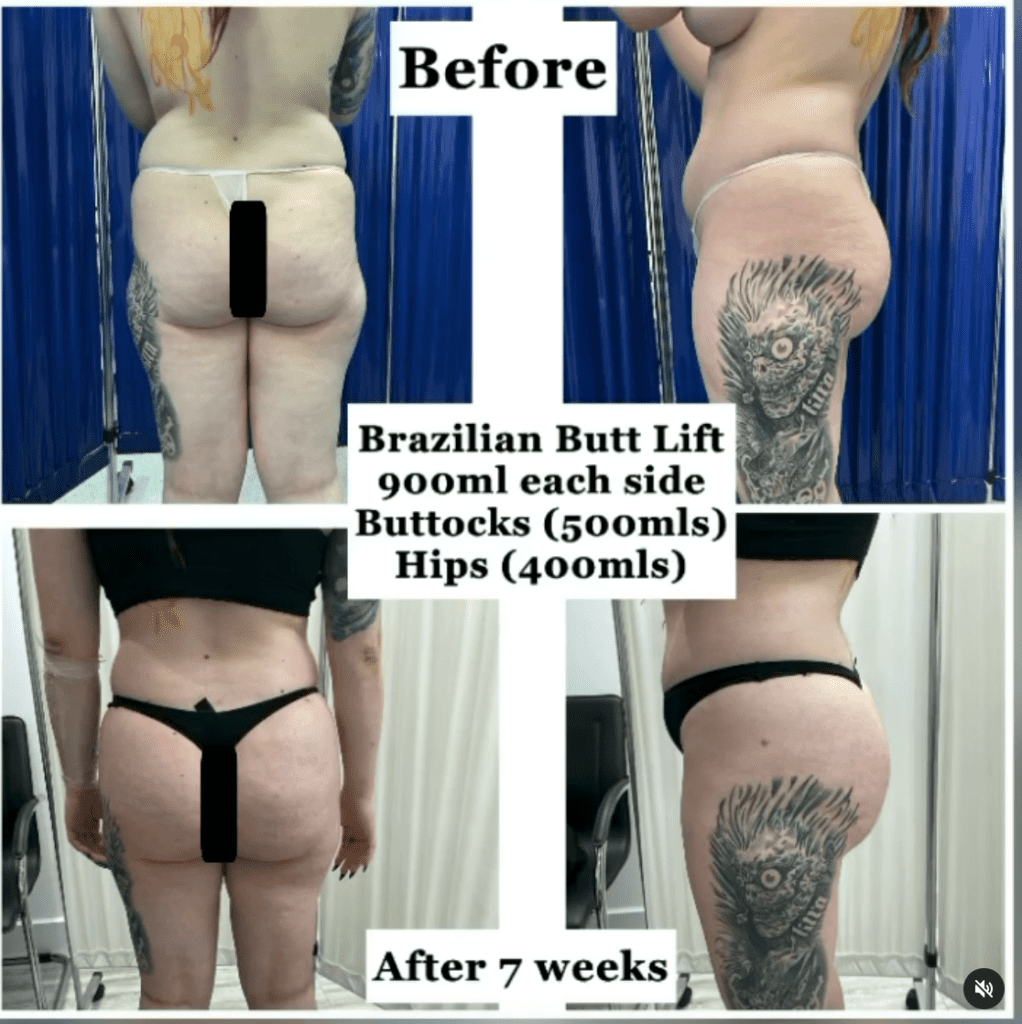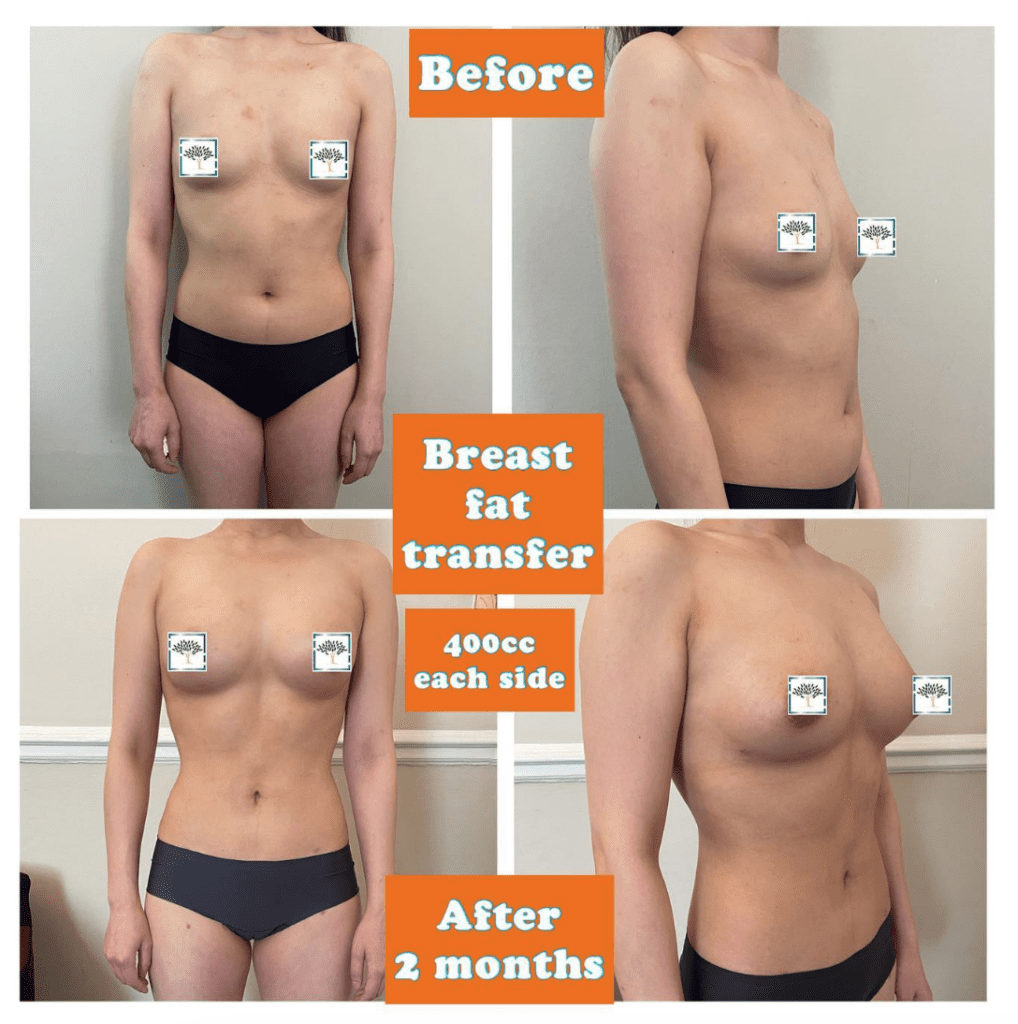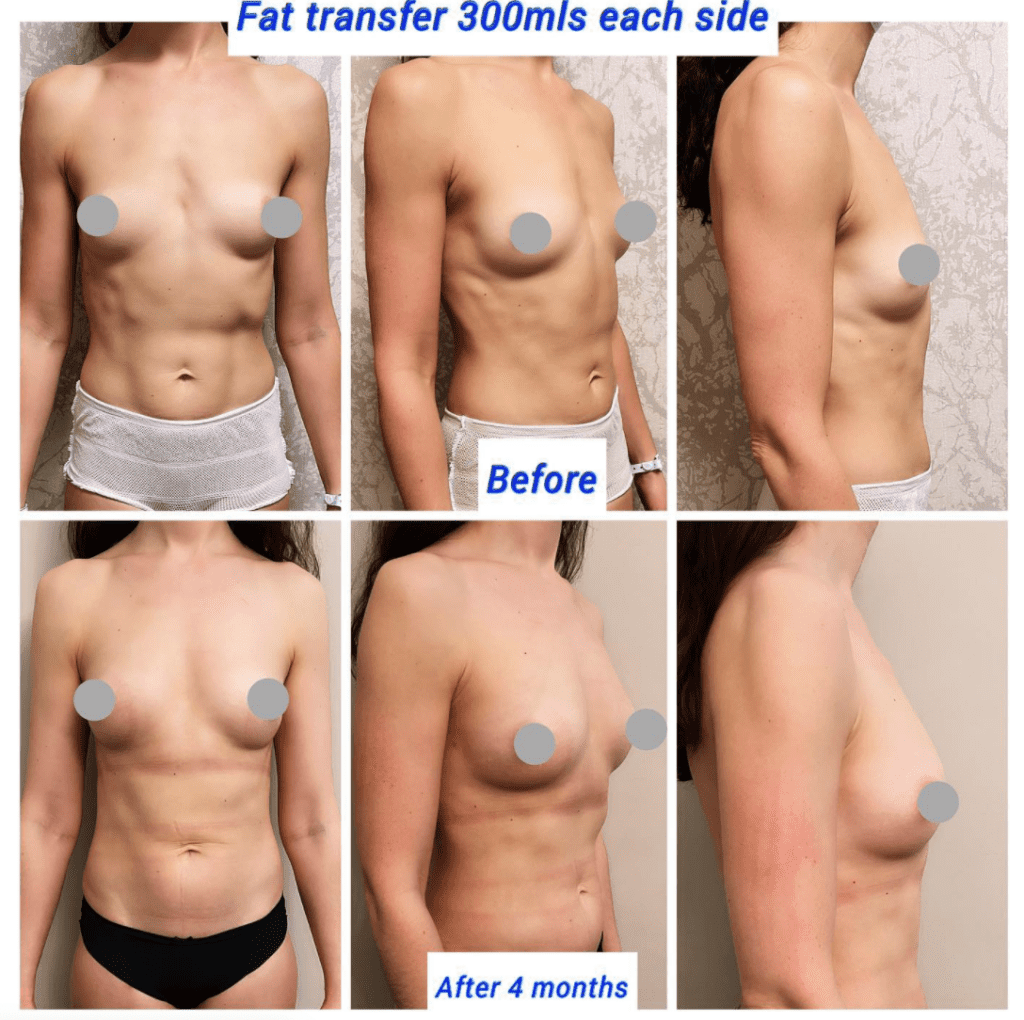By removing fat from one part of the body and injecting it into another, you can boost volume and lose stubborn fat at the same time. Although it sounds like a simple procedure, it requires a great amount of skill and knowledge of the human body. Often, patients opt for fat transfer as a more natural way to improve the contours of the body without using any foreign objects, like implants.
What is Fat Transfer?
Surgical fat transfer or fat grafting is the process of moving from one part of the body to another. You can undergo various types of fat transfer surgeries.
Facial Fat Transfer
Facial fat transfer can target the chin, cheeks, lips, and treat dark circles under the eyes. It can help to restore volume in these areas and reduce eye bags under the eyes. Fat transfer to the face can create natural-looking results and rejuvenate the face without using foreign substances.

Breast Augmentation Fat Transfer
Breast fat transfer uses fat grafting techniques to increase breast size. Instead of using breast implants, fat will be injected into the breasts for a natural-looking increase. Breast augmentation fat transfer is growing in popularity as a more natural way to increase breasts without using implants.
It tends to be suitable for patients looking for a modest breast cup size increase, like a cup or 2. Unlike breast implants, there’s no maintenance, and you don’t have to worry about replacing the implants down the line.
Brazilian Butt Lift (BBL)
A Brazilian butt lift uses fat grafting techniques to enhance the bum. The procedure can create a more shapely bum by using the latest fat grafting techniques. A BBL can improve the overall balance and shape of the body.

As you can see, there are different ways you can have fat transfer surgery. Overall, the aim of fat transfer procedures is to remove unwanted fat and smooth or increase the size of another area of the body.
Fat Transfer Recovery Time
Your fat transfer recovery will depend on your type of procedure. In general, you can expect it to take 4-6 weeks to recover. However, more intense procedures may need weeks or months longer before you can resume all activities. It can take up to 6 months for the fat to properly settle.
The recovery time will depend on the number of areas liposuction is carried out as well as the procedure itself. In general, most patients are fully recovered in 6 weeks. Your recovery will look different depending on the surgery.
Depending on your results, you may need a top up procedure. Although the results of fat transfer are permanent, occasionally, areas don’t turn out quite as expected. If that’s the case, you may need an additional procedure which should be less extensive than the initial surgery.
Fat Transfer Recovery Pictures


6 Tips to Maximise Fat Transfer Recovery Results
Recovery is crucial in any cosmetic surgery. But with fat transfer it’s especially important because the recovery process aims to achieve optimal fat retention after the procedure. Although fat survival can vary from one patient to another, these 6 tips can help to maximise your fat transfer results.
1. Wear Your Compression Garment
In your recovery, the first thing your surgeon will recommend is that you wear your compression garment. Compression garments help to reduce swelling and bruising. With fat transfer patients, compression garments can also help smooth the skin in areas where fat has been removed. Depending on your treatment, your surgeon may advise you to wear your compression garment for 2-3 weeks.
Fat Transfer Breast Augmentation Results
You won’t wear any compression on your breasts as the aim is to avoid putting pressure on the breasts. Any pressure or restriction could impact blood flow to the new fat cells. You don’t want to restrict any blood flood to the fat so that it settles in the best way possible. The compression garment will help to reduce swelling in the liposuctioned areas.
2. Eat Nutrient-Dense Foods
Follow a healthy diet and fuel your body with nutrient-dense foods. Eat protein-rich foods, healthy fats, and vegetables. Avoid eating overly surgery or processed foods. Following a healthy and balanced diet supports your overall fat transfer recovery.
3. Get Creative to Sleep
With fat transfer procedures, you want to avoid putting pressure on the area when you sit and sleep. This is far easier with facial fat transfer or breast fat transfer, as you can sleep on your back with your head elevated and still get a good night’s sleep. With a BBL, you may have to get a little more creative with your sleeping positions. Stomach sleeping is the best option, and slide sleeping could be possible as long as you definitely don’t end up on your back.
4. Maintain Your Weight
The best candidate for fat transfer surgery is healthy and active, with enough redistributable fat to make a difference. During your recovery, avoid gaining or losing weight, as it could impact your new results. Try to eat healthily and maintain your weight throughout recovery.
5. Avoid Smoking and Alcohol
Smoking can impact your fat transfer recovery by decreasing blood flow, which makes wounds less likely to close. The quality of your blood can be affected, and therefore, it could hinder your entire recovery process. If you have quit smoking before the procedure, try to avoid picking it up again. It’s also best to avoid drinking alcohol for three weeks before and after your surgery.
6. Drink Plenty of Water
Staying hydrated will support your recovery and overall health. Drinking plenty of water helps to re-establish blood supply after the procedure, clear out waste, and move nutrients around the body.
In the first month after your surgery, it’s a good idea to avoid high-intensity exercise. As your body heals and recovers, you will feel stronger. By following your surgeon’s post-operative instructions, you can maintain optimal and long-lasting fat transfer results.
Fat Transfer UK at The Harley Clinic
If you’re considering fat transfer, contact the team at our Harley Street cosmetic surgery clinic and book a consultation today at the Harley Clinic.













